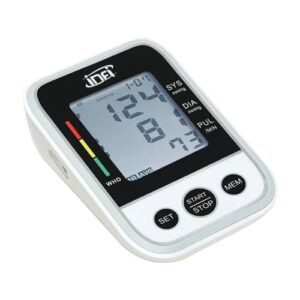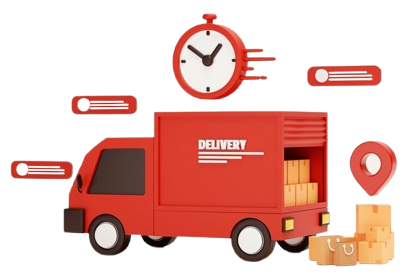You ever get that feeling when you’re juggling a dozen DeFi positions and suddenly wonder, “Wait, did I just miss a sweet yield farming window?” Yeah, me too. Managing liquidity pools and farming strategies is like trying to catch a moving train, especially when prices and rewards shift by the minute. Honestly, it’s exhausting and sometimes feels chaotic.
But here’s the thing. If you’re not using real-time portfolio analytics, you’re flying blind. Seriously. I remember when I first dove into yield farming — my dashboard was a mess of screenshots and manual checks. It was slow and pretty error-prone. And that’s before you even consider how volatile some tokens can be.
So, what’s the solution? Fast, accurate, and user-friendly tracking tools that give you a real-time snapshot of your holdings and farming returns. It’s not just a convenience; it’s a necessity if you want to stay competitive. Actually, wait—let me rephrase that: if you want to survive in DeFi’s wild west, you need to have your finger on the pulse constantly.
On one hand, you’ve got platforms that update slowly or offer only limited data. On the other, some tools drown you in numbers without context, making it hard to decide what to do next. Though actually, I found a middle ground that works.
Check this out — the dexscreener official site offers a slick interface that tracks liquidity pools, token prices, and farming rewards live. It’s saved me from missing out on several lucrative opportunities just because I wasn’t looking at the right data at the right time.
Now, let me share a bit about how I approach yield farming with portfolio tracking. Initially, I thought it was enough to watch token prices on CoinGecko or CoinMarketCap. But that’s like watching the weather outside and hoping you don’t get rained on. It doesn’t show the micro-movements in liquidity or the subtle shifts in pool incentives.
My instinct said there had to be a better way, so I started digging into decentralized exchange screeners. What blew me away was the ability to see live token charts alongside liquidity volume and trade flow. This meant I could spot when a pool was heating up or cooling off and adjust my stakes accordingly.
Whoa! Imagine being able to jump into a high-yield pool the second it starts pumping and pull out before impermanent loss hits hard. That’s the kind of edge real-time tools give you.
But here’s what bugs me about some platforms — they’re either too complex for casual users or too simplistic for serious traders. You get one or the other. I’m biased, but that’s why I keep coming back to the dexscreener official site. It strikes a nice balance between depth and accessibility.
Of course, no tool is perfect. Sometimes data lags or API hiccups happen, and you catch yourself double-checking on-chain info just to be sure. That’s just part of the game.
The Sweet Spot: Combining Portfolio Tracking with Yield Farming
Okay, so check this out—when you combine real-time portfolio tracking with yield farming, you’re not just watching numbers; you’re reading the pulse of the market. That’s crucial because DeFi moves fast, and liquidity pools can shift from gold mines to traps in hours.
For example, I recently noticed a sudden uptick in volume and APR on a relatively obscure pool. My gut told me to investigate. After pulling up the live data on dexscreener, I confirmed the trend and hopped in early. The returns were very very impressive, even after fees and gas.
But here’s a twist—sometimes the highest APR pools are the riskiest. If you don’t track your portfolio’s exposure carefully, you can get burned by impermanent loss or rug pulls. Real-time alerts and data can save your bacon by flagging weird activity or sudden liquidity drops before you’re stuck.
One thing that fascinates me is how some traders use these tools to rebalance constantly, chasing yield without losing sight of risk. That’s a skill in itself, and having a dashboard that updates every minute makes it manageable instead of overwhelming.
Hmm… I’m not 100% sure if this approach works for everyone, especially newbies, but for those comfortable with DeFi’s volatility, it’s a game-changer.

Here’s a quick tip: when you’re looking for new farming opportunities, don’t just chase the highest APR. Look at liquidity depth, token volatility, and recent trade flow. Platforms like the dexscreener official site help you spot these nuances quickly, giving you a fuller picture to make smarter moves.
And yeah, there’s a bit of an art to it. You learn to read patterns and anticipate shifts, almost like a seasoned trader watches candlesticks. The more you use these real-time tools, the more intuitive it becomes.
One thing I’ve noticed though—tracking your portfolio live can be addictive. I’ve caught myself refreshing dashboards way too often, chasing tiny gains. It’s a double-edged sword.
Still, I’d rather have that level of control and insight than guesswork any day.
Liquidity Pools: The Heartbeat of DeFi Strategy
Liquidity pools are like the engines that drive yield farming. Without them, there’s no reward distribution or token swaps. But managing your stakes in these pools is tricky. You have to keep an eye on how much you’ve contributed, the pool’s total liquidity, and the evolving rewards.
Something felt off about blindly trusting static snapshots of your investments. That’s why I’m all about dynamic portfolio tracking, where numbers update live and reflect on-chain reality. It gives you a sense of control and confidence that’s hard to beat.
Sometimes I wonder if too many people still overlook this and just hold tokens without tracking pool health. That’s risky. If a pool dries up or gets exploited, your funds could be stuck or lost.
On the flip side, a healthy, high-liquidity pool often means smoother trades and steadier returns. Real-time data helps you identify those sweet spots early.
For anyone serious about DeFi, I can’t recommend enough getting familiar with tools that track liquidity pools live. The dexscreener official site is one I trust because it aggregates data across multiple chains and DEXs, giving a broad yet detailed landscape.
Alright, so to wrap my head around this stuff, I often think of portfolio tracking like GPS for your DeFi journey. Without it, you’re guessing directions. With it, you can navigate yield farming opportunities and liquidity shifts much smarter—and probably safer.
But yeah, there’s always more to learn. The ecosystem evolves fast, and sometimes new risks or tools pop up overnight. That’s part of the thrill and frustration.
Anyway, if you haven’t tried integrating a real-time tracker into your DeFi routine, give it a shot. Even if you’re just starting, it’ll save you headaches down the road.
Frequently Asked Questions
Why is real-time portfolio tracking essential for yield farming?
Because yield farming rewards and liquidity pools fluctuate rapidly, having live data helps you make timely decisions to maximize returns and minimize risks.
Can I rely solely on token price tracking for managing my DeFi portfolio?
Not really. Token prices are just one piece of the puzzle. You also need to track liquidity, pool rewards, and other metrics to get the full picture.
What makes the dexscreener official site stand out among other tracking tools?
It offers comprehensive, real-time data across multiple decentralized exchanges and liquidity pools, balancing depth and usability in a single platform.


